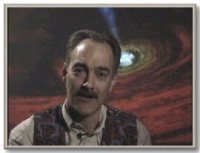Tuesday March 6, 2001
13:00 Eastern
 |
 |
|
Mike Garcia
|
 |
|
Andrea Prestwich
|
LIVE FROM A BLACK HOLE
Tuesday March 6, 2001
13:00 Eastern
BLACK HOLES--from FICTION to FACT
In 1687 Newton published his laws of gravity and motion, and about 100 years later an English clergyman and amateur scientist, Reverend Michell, wrote about a place where gravity might be so extreme that not even light could escape. In the 20th century Albert Einstein updated Newton’s ideas of absolute space and time with his theory of general relativity, in which spacetime itself is curved by mass. In 1967, quantum researcher John Wheeler coined the term "black hole", but until very recently they remained speculative and mysterious objects. Now, thanks to innovative techniques using X-ray telescopes and the visible effects of their otherwise invisible presence, researchers have discovered 3 different types of black holes, characterized by their masses.

In this section, CHANDRA researchers describe the types of black holes and how they form. Jeff McLintock and Mike Garcia explain the discovery of black holes some 3-10 times the mass of our Sun (which is too small ever to end up in a supernova or black hole--just in case you were worried!) Increasingly researchers using the Hubble Space Telescope and CHANDRA have found evidence of objects some 2-3 million times the mass of the Sun at the center of our Milky Way and other galaxies. Steve Murray explains why if there’s something that massive in a region no larger than the solar system, it must be a black hole, and Martin Elvis describes quasars, violent and highly energetic jets of matter that spout from the hearts of some galaxies--powered, we presume, by black holes. Then in 2000, Andrea Prestwich and Pepi Fabbiano found evidence of a black hole whose mass must be about 500 times that of the Sun--a mid-mass black hole, which they think may be a "missing link" between the stellar and galactic size objects.

In this section of the program, you’ll find out about the "accretion disk" which forms as matter swirls down and into the black hole, heating up via friction and tidal forces to millions of degrees, and so becoming visible in X-rays. You’ll also hear about "singularities" and the "event horizon", places where the normal laws of physics break down, and which are true frontiers of scientific understanding.
